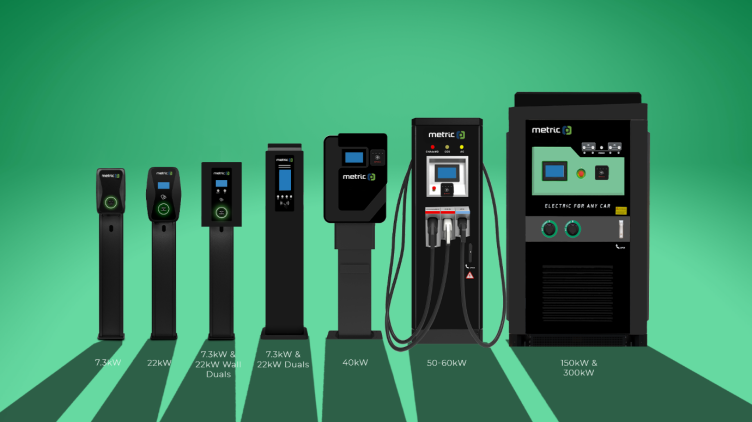The global transition towards electric vehicles (EVs) has gained significant momentum in recent years. As the world embraces this sustainable mode of transportation, it becomes crucial to address the issue of interoperability in EV charging infrastructure. This article explores the concept of interoperability, its status in India, global statistics from major EV markets, the involvement of government bodies, and the potential benefits it can bring to India’s EV industry. Furthermore, we will discuss the key stakeholders in India who can drive the necessary changes to promote interoperability.
Interoperability refers to the ability of different EVs to charge at various charging stations using standardized connectors and communication protocols. It ensures that EV users can access charging infrastructure conveniently, regardless of the vehicle make or charging station brand. Interoperability enables seamless charging experiences, promotes customer convenience, and fosters the growth of the EV ecosystem.
The importance of interoperability in EV charging cannot be overstated. It is a key factor in promoting widespread EV adoption and creating a robust charging network. Here are some key aspects of interoperability in the EV charging domain:
- Compatibility: Interoperability ensures that EVs from different manufacturers can charge at any charging station, irrespective of the charging station’s brand or infrastructure provider. This compatibility eliminates the need for EV owners to rely on specific charging networks, subscriptions, or adaptors, offering them greater convenience and flexibility.
- Standardization: standardization and interoperability of EV charging infrastructure are crucial for the widespread adoption of EV’s. Implementing standardized charging protocols and connector types will ensure that EVs from different manufacturers can be charged at any charging station across the country. This will enhance convenience for EV owners, promote interoperability, and encourage the growth of a robust charging network in India.
- Seamless User Experience: Interoperability enhances the overall EV charging experience for users. It ensures that EV owners can easily locate and access charging stations, regardless of the charging infrastructure provider. A seamless user experience encourages EV adoption by eliminating concerns about charging compatibility and accessibility.
- Scalability and Investment: Interoperability fosters scalability in the EV charging infrastructure. When charging stations are interoperable, they can serve a broader range of EVs, attracting more customers and increasing the utilization of charging infrastructure. This, in turn, incentivizes private investments in expanding the charging network, creating a sustainable and reliable EV charging ecosystem.
- Market Competition and Innovation: Interoperability promotes healthy market competition and innovation among charging infrastructure providers. When different providers adhere to common standards, they can focus on developing more efficient and innovative charging technologies rather than competing solely on infrastructure exclusivity. This results in advancements in charging speeds, grid integration, payment systems, and overall user experience.
- Regulatory Framework: Government bodies and regulatory agencies play a crucial role in promoting interoperability. They can establish policies, regulations, and standards that mandate interoperability, ensuring a level playing field for charging infrastructure providers. Governments can incentivize interoperability initiatives, facilitate collaborations among stakeholders, and drive the adoption of common charging standards.
Interoperability in EV charging is essential for creating a seamless, user-friendly, and scalable charging infrastructure. They can overcome compatibility challenges and unlock the full potential of their electric vehicle industries. Interoperability empowers EV owners with more charging options, accelerates EV adoption, and paves the way for a sustainable transportation future.
Electric Two-Wheeler Companies in India: Charging Compatibility and Connectors

This table shows the electric two-wheeler companies, their prominent models, charging compatibility information, and the type of charging connectors used. Please note that the specific charging connectors and compatibility may vary within different models offered by each company.
It is important to keep in mind that the electric two-wheeler market is dynamic, and there may be updates or changes in charging standards and connectors introduced by these companies.
Ather and Ola electric two-wheelers can be charged at home. They are compatible with standard charging connectors such as the common Indian three-pin plug for domestic AC charging and Type 2 connectors for AC Level 2 charging. This means that you can plug in your Ather or Ola electric scooter at home using a regular household outlet or a Type 2 charging station.
However, when it comes to charging from specific charging networks like the Ola Hypercharger Network or Ather Grid, the compatibility may be limited to the respective company’s proprietary charging connectors.
Regarding charging compatibility with other companies’ charging networks:
- Other electric scooter companies may not be able to charge directly from the Ola Hypercharger Network. Ola electric scooters use proprietary connectors specific to Ola Electric, which may not be compatible with other companies’ electric scooters.
- Similarly, other electric scooter companies may not be able to charge directly from the Ather Grid. Ather Energy uses its proprietary charging connectors, which may not be compatible with charging stations from other companies.
Therefore, while home charging should be possible for all electric scooter models using standard charging connectors, charging from specific charging networks like the Ola Hypercharger Network or Ather Grid may be limited to the respective company’s electric scooter models due to proprietary charging connectors.
Electric four-Wheeler Companies in India: Charging Compatibility and Connectors
It is generally true that electric vehicles in India can be charged from similar chargers across states.
The Indian government, as well as various private companies, are actively working on expanding the charging infrastructure for electric vehicles throughout the country.
Reasons for Diverse Chargers:

Multiple factors contribute to the existence of different chargers for EVs in India.
- Vehicle Compatibility: EV manufacturers offer different charging options based on their vehicle models. Some EVs are designed to be compatible with specific charging standards, while others may support multiple standards. As a result, different chargers are required to cater to the varying needs of different EV models available in the market.
- Charging Infrastructure Development: The development of charging infrastructure in India is still in its early stages. As a result, different companies and organizations are investing in charging stations and networks, leading to the deployment of different types of chargers. This diversity is a result of various players entering the market and offering their charging solutions to cater to different customer segments.
Example- Let us take an example of TATA & MG

- Power Availability and Grid Constraints: India faces challenges related to power availability and grid constraints, particularly in some areas. To address this, different types of chargers are being deployed, such as fast chargers, slow chargers, and home chargers. These different charging options help manage the load on the grid and ensure that EV charging infrastructure can be established even in areas with limited power availability.
- Metros and developed urban areas: Metros and developed urban areas in India generally have better power availability and robust grid infrastructure. These regions often have a wider range of charger options, including AC Level 1, AC Level 2, and DC Fast Chargers. Examples of such regions include Delhi-NCR, Mumbai, Bangalore, Chennai, and Kolkata.
- Semi-urban and suburban areas: Semi-urban and suburban areas may have relatively moderate power availability and grid constraints compared to metros. These regions may primarily rely on AC Level 1 and AC Level 2 chargers, with fewer installations of DC Fast Chargers. Examples of such regions include cities like Pune, Ahmedabad, Hyderabad, and Jaipur
- Rural and remote areas: Rural and remote areas in India may face challenges in power availability and have limited grid infrastructure. As a result, charging infrastructure in these regions may be more limited. In such areas, AC Level 1 chargers or basic charging solutions may be more prevalent. Examples of rural and remote regions include villages and remote districts across the country.
- Market Competition and Innovation: The EV market in India is rapidly evolving, with multiple companies competing to capture market share. This competition drives innovation and results in the introduction of various charging technologies and solutions. Different companies may have their proprietary charging systems or unique features in their chargers, leading to a diverse range of options in the market.
Overall, the diversity of chargers for EVs in India is influenced by factors such as charging standards, vehicle compatibility, infrastructure development, power availability, and market competition. As the EV market matures and standardization efforts continue, we can expect some level of consolidation and harmonization in the charging infrastructure.
Global Statistics:

- India: India’s electric vehicle market is still in its early stages, with sales accounting for less than 2% of total vehicle transactions. Around 340,000 electric vehicles were registered in the country, and this number is expected to grow significantly in the coming years due to factors such as rising fuel prices, favorable policies, government benefits, and the launch of popular electric vehicle models (FY 2022). India is actively working towards ensuring interoperability of EV charging infrastructure. Government bodies such as the Ministry of Power, Department of Heavy Industry, and Central Electricity Authority are involved in formulating guidelines and technical standards to promote compatibility among different charging stations. Efforts are being made to establish an open-standard-based interoperable charging network, allowing EV users to charge their vehicles seamlessly across various charging networks.
- China: China has emerged as the world’s largest EV market. The country has taken significant steps to standardize its EV charging infrastructure by implementing the GB/T charging standard, which combines both AC and DC charging capabilities. The Chinese government has mandated a unified national standard for EV charging connectors, promoting compatibility and interoperability. The State Grid Corporation of China (SGCC) has played a crucial role in developing a nationwide charging network with interoperable charging stations.
- Europe: The European Union has made considerable progress in interoperability, with the widespread adoption of the CCS connector for DC fast charging. Europe currently has around 350,000 EV charging points and major EMSPs such as Last Mile Solutions, which cover close to 275,000 charging points through partnership with multiple CPOs. The European Charging Interface Initiative (CharIN) has played a crucial role in driving standardization efforts across the region.
- United States: In the United States, the charging landscape is more fragmented, with a mix of CHAdeMO, CCS, and Tesla Superchargers. US also have several EMSPs, such as Virta Global, Driivz, Current, Go to-U, Panion and Has-to-be, which allow EV users to access a large charging network. However, industry collaborations and regulatory efforts are gradually working towards promoting interoperability.
- United Kingdom: Interoperability of EV charging is a key focus for the government and industry stakeholders in UK. Efforts are being made to establish open standards and ensure compatibility between different charging networks. Initiatives like the Open Charge Point Protocol (OCPP) and roaming agreements between charging operators aim to enable seamless charging experiences for EV users across various networks.
Government Bodies Involved:

In India, various government bodies and organizations are actively involved in promoting interoperability of EV charging infrastructure. Here are some key entities that contribute to the development and standardization of EV charging:
- Ministry of Power (MoP): The MoP is responsible for formulating policies and regulations related to the power sector, including EV charging infrastructure. They have issued guidelines and frameworks to promote the development of charging infrastructure and encourage interoperability among different charging stations.
- Department of Heavy Industry (DHI): The DHI, under the Ministry of Heavy Industries and Public Enterprises, plays a significant role in formulating policies and implementing programs related to the automobile industry. They have introduced the Faster Adoption and Manufacturing of Hybrid and Electric Vehicles (FAME) scheme to support the adoption of EVs and charging infrastructure. The DHI focuses on the interoperability of charging infrastructure under this program.
- Central Electricity Authority (CEA): The CEA is the nodal agency for technical matters related to the power sector in India. They provide technical standards and guidelines for EV charging infrastructure, including interoperability aspects. The CEA has released guidelines specifying the technical requirements for charging stations to ensure compatibility and interoperability.
- Bureau of Indian Standards (BIS): BIS is the national standardization body in India. They play a crucial role in establishing technical standards and certifications for various sectors. BIS has been involved in formulating standards for EV charging infrastructure to promote interoperability and ensure safety. They have developed standards for EV charging connectors, communication protocols, and safety requirements.
- Energy Efficiency Services Limited (EESL): EESL is a public sector energy service company that promotes energy efficiency and clean energy solutions. They have implemented large-scale EV charging infrastructure projects across India, including the development of the National Electric Mobility Platform (NEMP). The NEMP aims to establish an open standard-based interoperable charging network.
- Society of Manufacturers of Electric Vehicles (SMEV): SMEV is an industry association representing manufacturers of EVs and associated components in India. They work closely with the government and other stakeholders to promote the adoption of EVs and address challenges related to charging infrastructure, including interoperability.
Key Stakeholders in India:
To bring about a change towards interoperability in India, multiple stakeholders need to collaborate:
- Government Agencies: Ministries and regulatory bodies need to promote standardization, incentivize interoperability, and ensure compliance through policies and regulations.
- EV Manufacturers: Collaboration among EV manufacturers is essential to adopt common charging standards and support interoperability across their vehicle models.
- Charging Infrastructure Providers: Charging station operators must embrace interoperability standards and invest in technology upgrades to accommodate multiple charging connectors.
- Industry Associations: EV industry associations can play a crucial role in advocating for interoperability, facilitating discussions among stakeholders, and driving consensus on charging standards.
Conclusion:
Interoperability of EV charging infrastructure holds immense potential to accelerate the growth of India’s electric vehicle industry. By adopting standardized connectors and communication protocols, India can provide seamless charging experiences to EV users, enhance convenience, and boost consumer confidence in EV adoption. The involvement of government bodies, EV manufacturers, charging infrastructure providers, and industry associations is vital in driving the necessary changes to achieve interoperability and unlock the full potential of India’s EV market.





